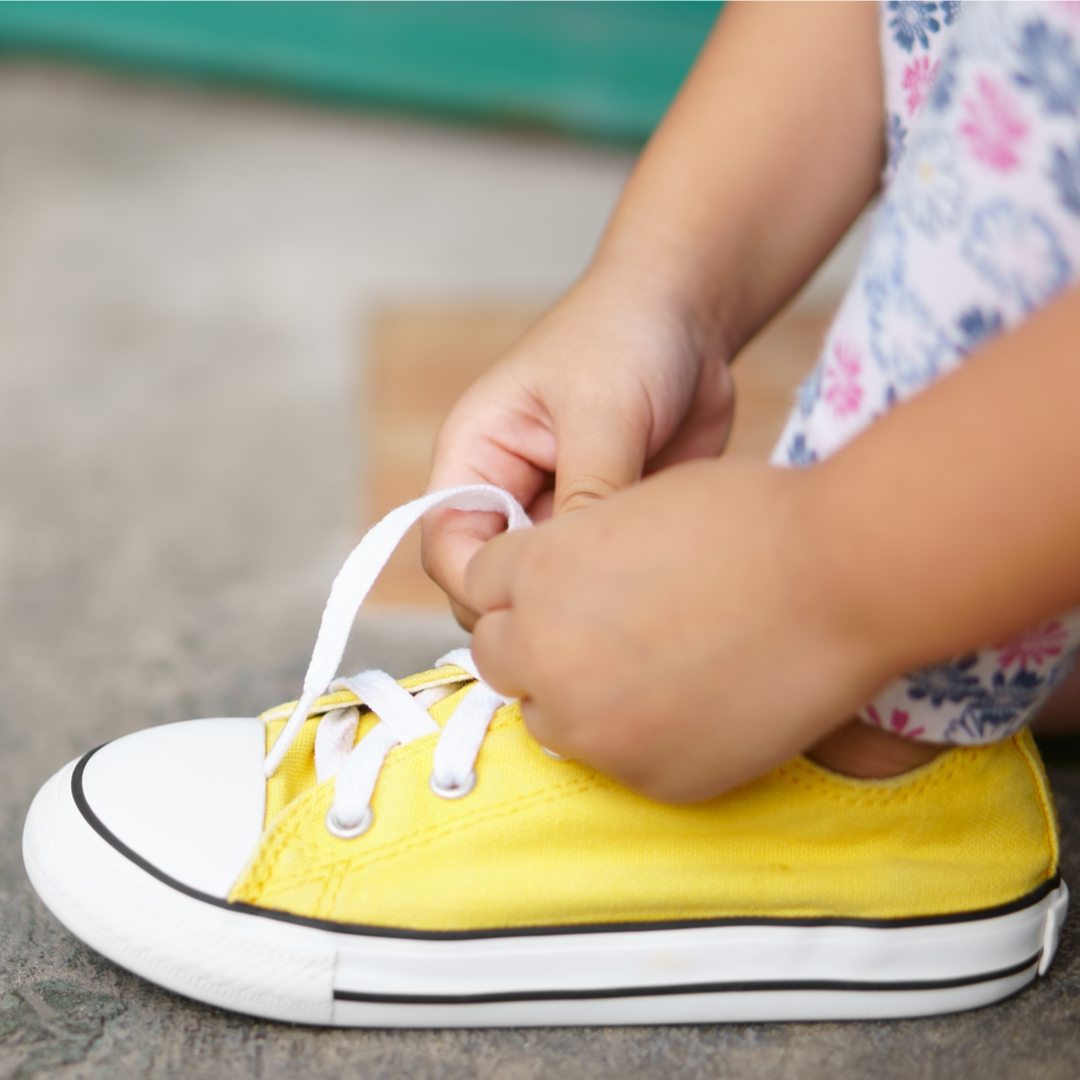
Mastering Shoelace Tying: How Occupational Therapy in Bondi Junction and Mascot Can Help Your Child
Learning to tie shoelaces is a significant milestone in a child’s life. It marks an important step towards independence and strengthens essential fine motor skills. While it can be a tricky task for many children, with guidance, patience, and practice, they can successfully master this skill. Our Occupational Therapists in Bondi Junction and Mascot frequently work with children to help them achieve shoelace-tying success. Here’s a guide on how children learn to tie shoelaces and how parents can support them.
Why Tying Shoelaces is Important
- Independence: Tying their own shoelaces allows children to feel more independent and confident.
- Fine Motor Skills: It helps develop the small muscles in their hands, fingers, and wrists, improving fine motor control.
- Problem-Solving: The process of learning involves following steps and solving small challenges, enhancing cognitive skills.
When to Start
Children typically begin learning to tie their shoelaces around the ages of 5 to 7. However, some may be ready earlier or later. Signs of readiness include showing interest in tying shoes or demonstrating good control over their hands and fingers.
Steps to Teach Shoelace Tying
- Preparation: Start when your child is relaxed. Use two different-coloured laces to make it easier for them to distinguish between the steps.
- Demonstrate Slowly: Show your child how to tie shoelaces one step at a time:
- Step 1: Cross the laces and pull tight to make an “X”.
- Step 2: Create one loop, often called the “bunny ear”.
- Step 3: Wrap the other lace around the bunny ear.
- Step 4: Pull the second lace through the hole to make a second loop.
- Step 5: Tighten both loops.
- Use Rhymes or Stories: Simple rhymes or stories can make the steps memorable. For example, “The bunny runs around the tree and into the hole!”
- Practice with Large Laces: Start with large laces or practice on a shoe that’s not being worn for ease.
- One Step at a Time: Focus on one step until your child masters it, then move on to the next.
- Repetition: Keep practice sessions short and fun. Repetition helps reinforce the process.
Tips for Success
- Patience: Learning to tie shoelaces takes time. Stay patient and encouraging.
- Positive Reinforcement: Celebrate small successes and offer praise for effort.
- Try Different Techniques: If one method doesn’t work, try another. Popular techniques include:
- Bunny Ears: Make two loops and tie them together.
- Loop, Swoop, and Pull: Wrap the lace around the loop and pull it through.
- Ian Knot: A quicker, advanced method for tying laces.
Overcoming Challenges
If your child struggles with tying shoelaces, consider these strategies:
- Hand Strength and Coordination: Tying laces requires hand strength and coordination. Practice activities like playdough, threading beads, or using tweezers to strengthen the hands.
- Persistence: Encourage your child to keep trying, even if they get frustrated.
- Consistency: Regular practice is key, but make sure it stays fun.
How Occupational Therapy Can Help
Our Occupational Therapists at OneOnOne Children’s Therapy in Bondi Junction and Mascot can assist children who are having difficulty with tasks like shoelace tying. By assessing each child’s individual strengths and challenges, we provide targeted exercises to develop the fine motor skills, coordination, and hand strength needed for tying shoelaces.
Conclusion
Learning to tie shoelaces is an important milestone in your child’s path to independence. By breaking the task down into simple steps, using creative techniques, and providing plenty of positive encouragement, parents can help their children master this skill. Each child learns at their own pace, so it’s important to be patient and celebrate every achievement. With time and regular practice, your child will confidently tie their own shoelaces.
We’re Here to Support You
At OneOnOne Children’s Therapy, we believe that every child deserves the chance to thrive and grow. Our Occupational Therapists in Bondi Junction and Mascot provide a supportive, engaging environment where children can build the skills they need for independence, including shoelace tying.
Reach Out for Support
If you’re concerned about your child’s ability to tie shoelaces, or want to learn more about how Occupational Therapy can help, contact OneOnOne Children’s Therapy. Our AHPRA registered Occupational Therapists are ready to support your child’s unique developmental journey.
Call our Bondi Junction and Mascot clinics at (02) 80657837, or email us. You can also book a free 30-minute phone call to discuss how we can help. Read more on gross motor development in young children on our website. We offer a range of therapy services, including Occupational Therapy, Speech Pathology, and the Early Start Denver Model for children with autism.
